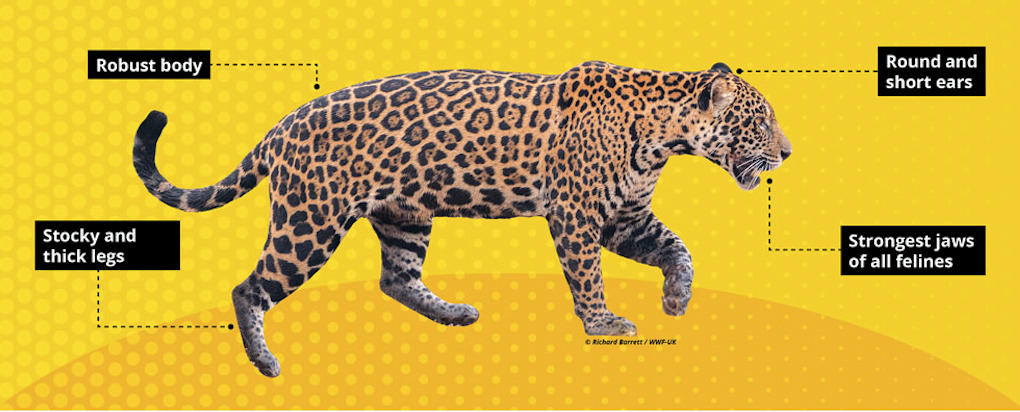Jaguar
(Panthera onca)
© Midori Paxton
Fast Facts
Jaguars are often mistaken for leopards, but can be differentiated due to the spots within the rosettes on their coats.
While many cats avoid water, jaguars are great swimmers, and have even been known to swim the Panama Canal.
The jaguar has been identified as one species across its entire range, making the connection and protection of its habitat critical for the species’ genetic diversity.
The jaguar is the largest carnivore and only big cat in Latin America, encompassing 18 countries from Mexico to Argentina.
As a “Near Threatened” species on the IUCN Red List of Threatened Species, the jaguar is extinct in El Salvador and Uruguay, and facing pressure in remaining range countries.
Jaguars have experienced over 50% loss in its natural habitat range.
Test your knowledge
How well do you know your wild cats? In this edition of “Cat Facts or Cat Fiction”, we’re testing your knowledge of jaguars.
¿Qué tan bien conoces a los felinos silvestres? En esta edición de "Datos sobre Felinos: ¿Realidad o Ficción?," ponemos a prueba tus conocimientos sobre los jaguares.
Key Threats
Why are jaguars important?
Today, jaguar conservation transcends the intent of safeguarding a single species. Successful conservation of this keystone species maintains forests, carbon stocks, biodiversity, watersheds as well as national and cultural heritage. These efforts not only protect all wildlife across the jaguar landscape but help diversify economic opportunities of local communities and contribute to global climate change mitigation and adaptation.
How do we protect jaguars?
Protecting the jaguar requires governments, NGOs and local communities to work in partnership to foster successful landscape level coordination, improve protected area management, develop innovative finance mechanisms for conservation and dedicate resources to mitigate the species’ greatest threats. This will require visionary planning and management of the landscape in the development and economic sectors in Latin America, such as agriculture, forestry and infrastructure, to maintain biodiversity, while achieving the Sustainable Development Goals (SDG), the Strategic Plan for Biodiversity 2011-2020 and the Aichi Biodiversity Targets.
The role of the jaguar as a flagship species for sustainable development and biodiversity conservation will be recognized and celebrated globally on International Jaguar Day.
Want to learn more?
Panthera’s jaguar experts have answered your jaguar questions here!


